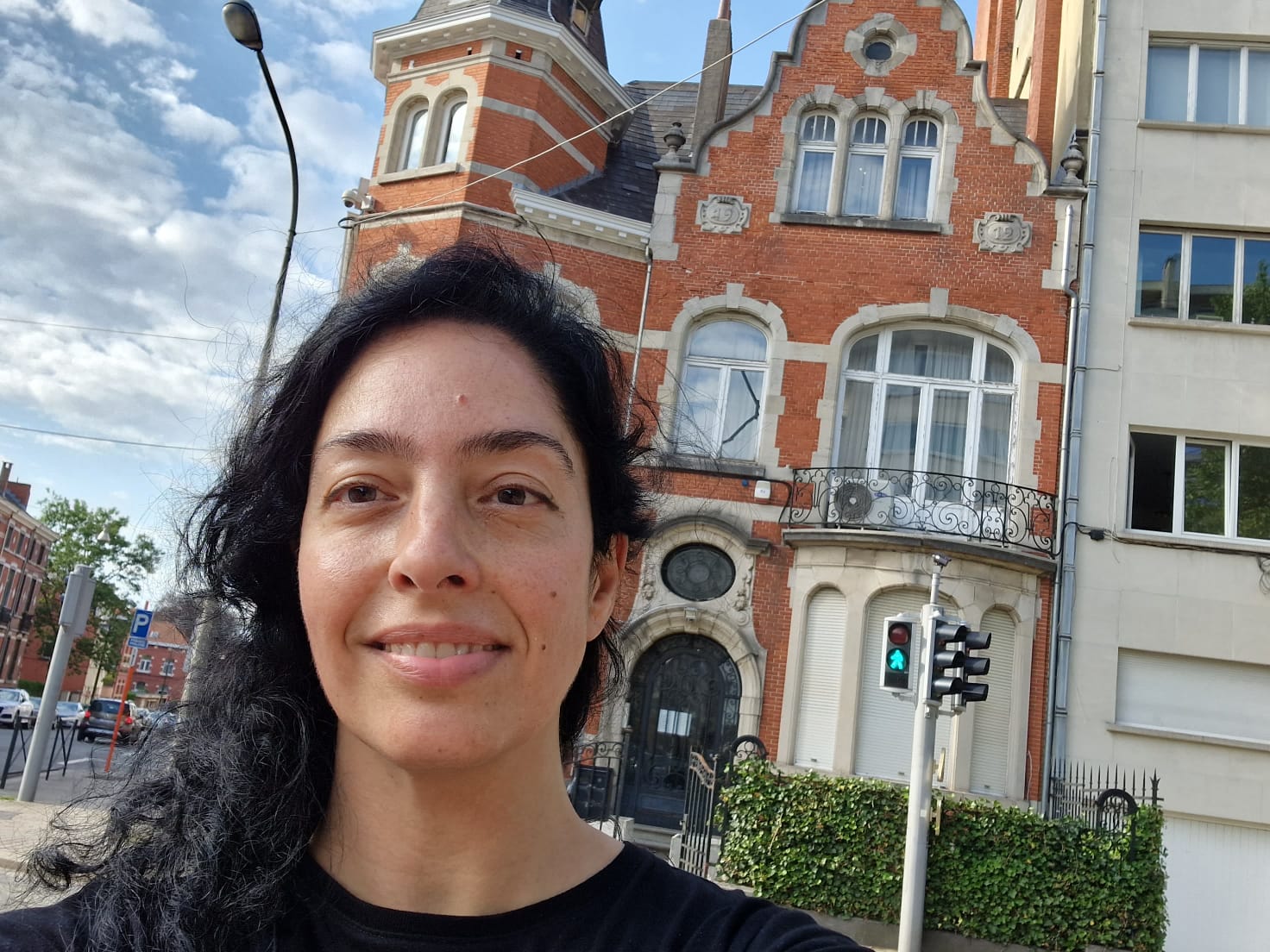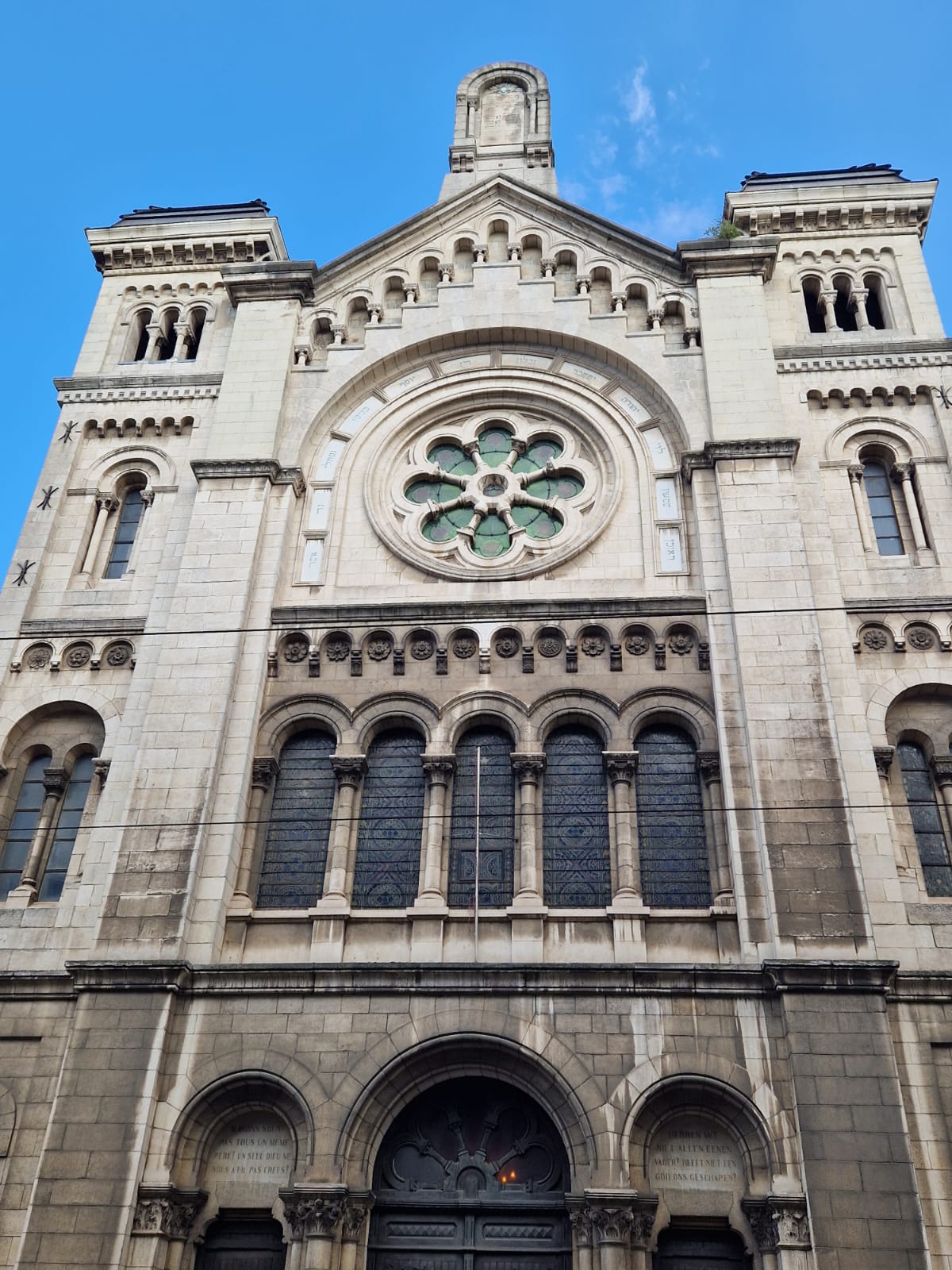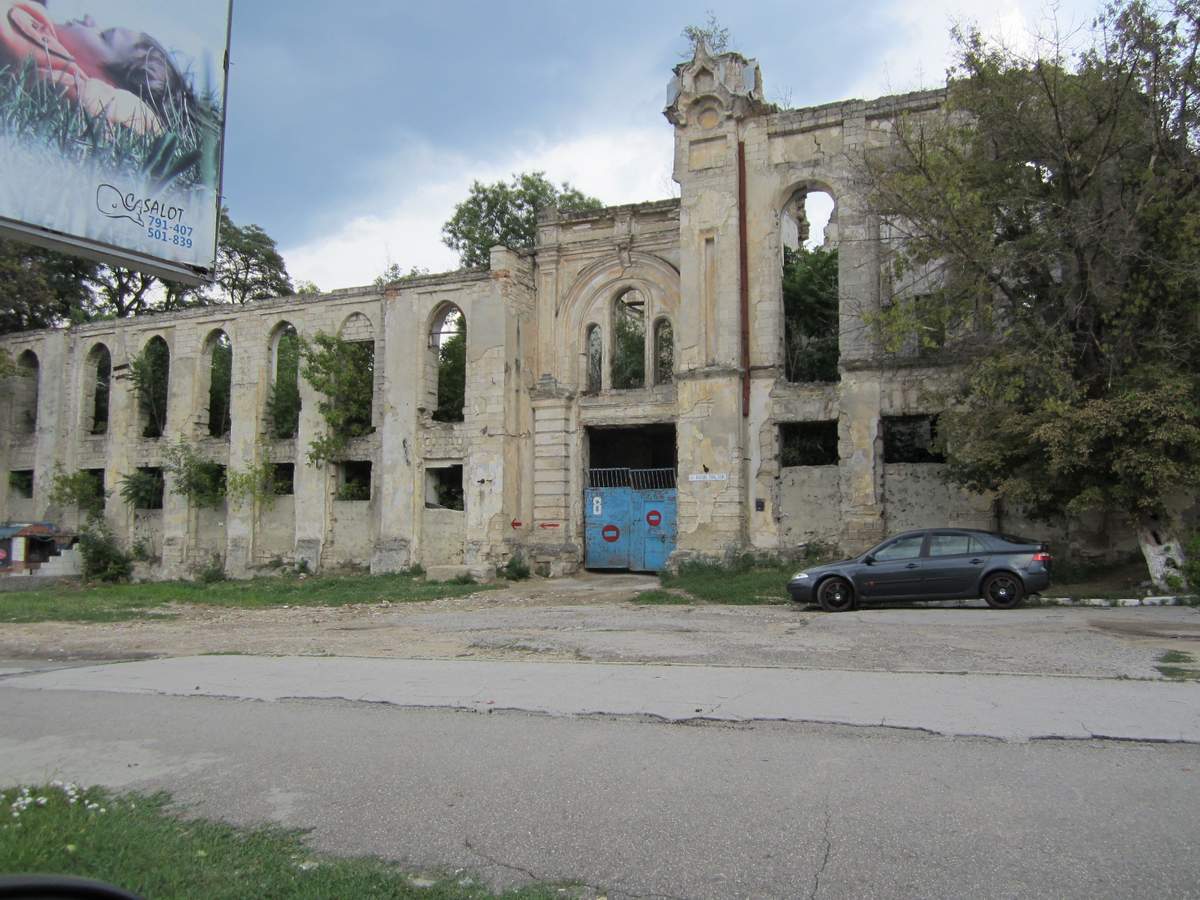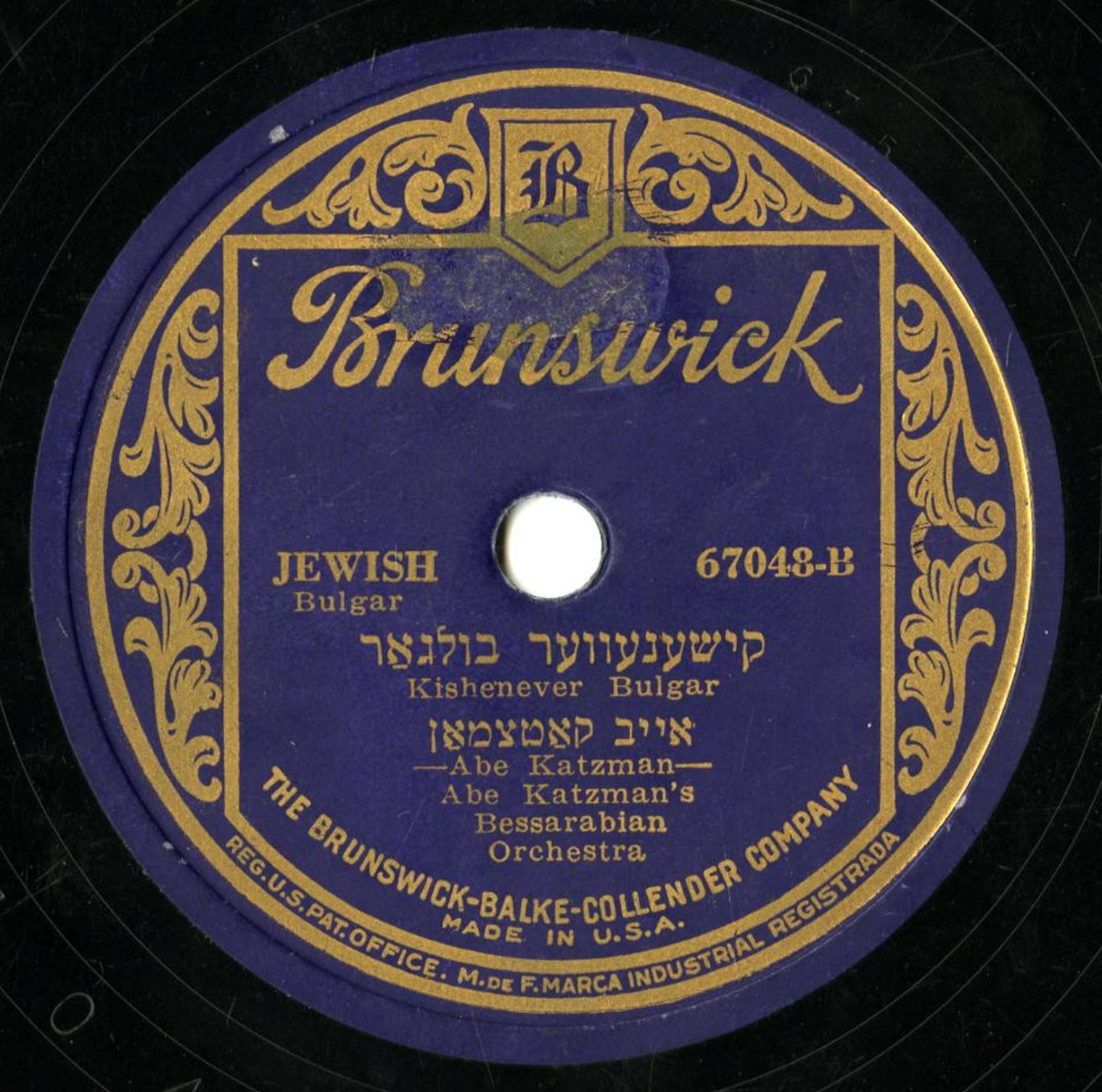17th June 2022 – Shabbat is almost here
And today we will enjoy with a danceable piece, a bulgar, by the Abe Katzman’s Bessarabian Orchestra.
 Hello, I hope you are well. I came back from the trip to Brussels and Poznań. In the picture you see me in front of the Sephardic synagogue in Brussels. It’s not very central, more than half an hour’s walk from the Grand Synagogue, which I show you below, but the walk on a very warm spring afternoon was lovely.
Hello, I hope you are well. I came back from the trip to Brussels and Poznań. In the picture you see me in front of the Sephardic synagogue in Brussels. It’s not very central, more than half an hour’s walk from the Grand Synagogue, which I show you below, but the walk on a very warm spring afternoon was lovely.
In the previous edition, new sounds in a clearly klezmer style were the protagonists, and today we return to klezmer, but to the klezmer of a century ago, with the music of violinist Abe Katzman and his orchestra from Bessarabia. I hope you’ll enjoy it!

Then, please, spread the word.
About Abe Katzman
This artist is not quite famous. I haven’t even found a picture of him. The only biography that I have found is the one in Wikipedia. That is the last resource I use when there is nothing more. Most of the articles in Wikipedia are quite accurated but not all and some of the reviewers behave like little dictactors when considering what is relevant and what not, which is very sad. In this case of the article about Abe Katzman I see most of the editions have been done by Dan Carkner, who I trust, so I will make a summary of Katzman’s bio from that source.
- He was born in 1868 in Chisinau, that is now the capital city of Moldova and that at that time was the Bessarabian Governorate of the Russian Empire.
- There were more musicians in his family.
- He emigrated to New York city in 1897 where he worked as a violin teacher and lead some artistic projects. He was contemporary of other artists of whom I have talked her before, like Abe Schwartz, Max Leibowitz and Dave Tarras.
- In December of 1927 he made several recordings, including the one we will listen to today (the last section of the text is about that).
- He moved to Los Angeles at some moment and died there in 1940.

About the recording Keshenever Bulgar
 Keshenever or Kishinever Bulgar means bulgar from Chisinau.
Keshenever or Kishinever Bulgar means bulgar from Chisinau.
According to the Discography of American Historical Records, the Abe Katzman Bessarabian Orchestra recorded the Kischenever bulgar for the company Brunswick in New York on 19 of December of 1927. That same day they recorded other three pieces: Ismaelover bulgar, Simhas Tore in Kischenev and Arinering from Kischenev. On Youtube you can listen to the ones I linked.
These same data are in “Brunswick Records: New York sessions, 1927-1931“. This work is quite interesting. It is one of the discographies published by Greenwood Press, edited by Michael Gray. This is the discography number 87 and I found that Abe Katzman’s nephew Louis Katzman recorded several Spanish pieces under with his orquestra “The Castilians”. This is very funny for me because I am a Castilian! You can listen some of the pieces, here.
About the style of “bulgar”, I will quote the edition about Meshuge Klezmer Band:
“Bulgar is a danceable klezmer music style. It’s background must be traced from the Bessarabian dance style under the name of bulgărească, documented in the first half of XIX Century. The style would develope after the contact of professional klezmorim from hereditary caste with Gypsy professional musicians. From there, it spreaded as the klezmer bulgarish to parts of Eastern Ukraine.From the last decades of XIX Century, many klezmorim emigrated to the USA and the style started to be identified as a danceable klezmer style shared between musicians from different regions. It took its definite shape in New York between 1920 and 1950, with the work of professional musicians (like Naftule Brandwein, that was our star two weeks ago) and the term bulgar finally epitomized the repertoire of dance music at the USA (but not at all in Europe), according to Walter Z. Feldman (after his work of 1994, that is really advisable, Bulgărească/Bulgarish/Bulgar: The Transformation of a Klezmer Dance Genre, and I just made a super reduced summary).”
